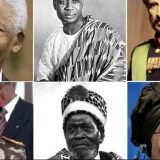Battle of Waterloo (June 18, 1815): The Final Defeat of Napoleon

Battle of Waterloo – history, duration, commanders, casualties, and significance
The date was June 18, 1815 and Napoleon Bonaparte had one last chance to secure France as Europe’s dominant power against Britain and the Seventh Coalition and possibly bring an end to the Napoleonic Wars. It was the deciding moment for the man who had once taken over France, declared himself emperor, expanded the French empire, and exiled in a matter of 13 years.
Sadly, the Battle of Waterloo spelled the end for him following his defeat by the Prussians and British armies. It also brought an end to France’s attempts at becoming a world superpower. But how did Napoleon go from successfully defending France against the coalitions for many years to losing at Waterloo? And how did his crushing defeat change Europe and the world?
Below, World History Edu takes a deep dive into the Battle of Waterloo, one of the most important battles in European history.
The Rise & Fall of Napoleon: France’s First Emperor
The charismatic and astute military general Napoleon Bonaparte was born in Ajaccio, on the Mediterranean island of Corsica in 1769. His family remained on good terms with the French even after Corsica fell under France’s control. Napoleon became a French military officer and rose through the ranks, eventually leading a coup d’etat in 1799, becoming First Consul of the French Republic, from 1799 to 1804, and then Emperor of the French from 1804 to 1814.

In 1804, Napoleon declared himself emperor and became the first emperor of France. Image: French general and emperor Napoleon Bonaparte
But the events of the French Revolution, which had birthed a republic, ignited other European powers, including Britain, Prussia, Austria, and Russia, to form coalitions against France. These anti-French coalitions were formed to prevent similar instances from occurring in other European kingdoms. Throughout Napoleon’s rule over France, he was embroiled in battles with various coalitions, winning many of those battles.
Undoubtedly, Napoleon was an exceptional military general who led France to win numerous battles and subdue the coalitions for brief periods. However, his downfall commenced in 1812, when he led the French army into Russia. The campaign ended in shambles, with many of his officers losing their lives, especially during the long and arduous journey back home. Napoleon was forced to retreat to Paris. Meanwhile, France was dealt another blow when its army was thrown out of the Iberian Peninsula during the Peninsular War (1807-1814).

In a well orchestrated move, Napoleon and his allies seized power during the Coup d’état of 18 Brumaire on November 1799. He was appointed one of three consuls of the French Consulate, which had replaced the Directory. The general would then go on to become First Consul (Premier consul) and later de facto leader of France. Image: General Bonaparte during the coup d’état of 18 Brumaire in Saint-Cloud, painting by French painter François Bouchot, 1840
In 1813, Austria, Russia, Sweden, and Prussia formed another coalition (i.e. the Sixth Coalition) against France. This conflict led to the Battle of Leipzig or the Battle of Nations (16 to 19 October 1813), which involved more than half a million soldiers, 2,200 artillery pieces, the expenditure of 400,000 rounds of artillery ammunition, and 133,000 casualties. It was the largest battle in Europe prior to World War I. The European coalition, led by Tsar Alexander I of Russia, defeated the Grande Armée of French Emperor Napoleon Bonaparte.
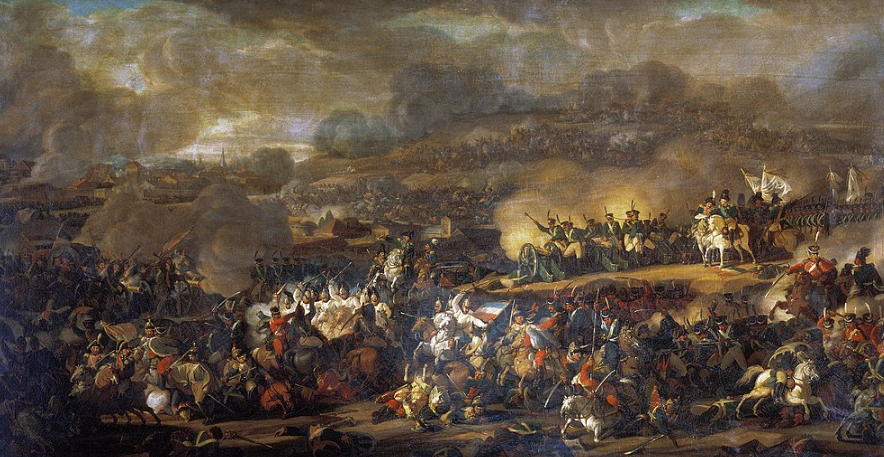
The Battle of Leipzig witnessed over 600,000 soldiers partake in it. The battle holds the record as the largest battle in Europe prior to World War I. Painting: Battle of Leipzig by Vladimir Moshkov
The French general and emperor was then forced to abdicate his throne. Under the Treaty of Fontainebleau, which was struck between Napoleon and representatives of Austria, Russia and Prussia on 11 April 1814, Napoleon was exiled to the Mediterranean island of Elba in 1814 and the French monarchy (i.e. the House of Bourbon) was restored, with Louis XVIII (brother of King Louis XVI) inheriting the French throne.

The Treaty of Fontainebleau of 1814 brought an end to Napoleon’s rule as emperor of the French. The renowned general was subsequently exiled to Elba, a Mediterranean island in Tuscany, Italy. Image: Emperor of the French Napoleon after his abdication in Fontainebleau, 4 April 1814, by French painter Paul Delaroche
Did you know…?
The Mediterranean island of Elba is 10 km (6.2 mi) from the coastal town of Piombino on the Italian mainland. It is also the largest island of the Tuscan Archipelago.
Napoleon Returns

In February 1815, Napoleon escaped from his exile in Elba and headed to France to restore his French Empire. Then-French king, Louis XVIII fled. Shortly after a new anti-France coalition declared war on the Napoleonic Empire. Image: Napoleon leaving Elba on 26 February 1815, by French painter Joseph Beaume (1836)
Barely a year into his exile, on February 26, 1815, Napoleon fled from Elba and sailed to France, arriving in Paris a month later. Now that he was back, and with his French Empire restored, he embarked on another military campaign known as the Hundred Days (also known as the War of the Seventh Coalition).
Napoleon’s return revived the coalition of European powers and they began to prepare for another war against France. This time around, he tried to remain one step ahead of his enemies, planning to defeat the main members of the coalition before they could fully unite.
His first two targets were the Prussian and Anglo-Allied (including British, German, and Dutch men) armies which were led by Field Marshal Gebhard von Blucher and Field Marshal Arthur Wellesley, Duke of Wellington, respectively. At that time both armies had planned to assemble in the Netherlands, and Napoleon’s plan was to defeat them before they joined and outnumbered his army.
Battle of Ligny and the lead up to Waterloo

On June 16, 1815, Napoleon secured his last victory in his military career. Image: Battle of Ligny by Théodore Jung
In June 1815, Napoleon entered Belgium and encouraged his troops with the statement, “For all Frenchmen who have the courage, the moment has come to conquer or perish!” At first, his plan to separate the Prussians and British seemed to work. He defeated von Blucher and the Prussian army in the Battle of Ligny. However, the defeat wasn’t as devastating as he’d hoped. The Prussian army opted to retreat and settled in a location close to Waterloo in the United Kingdom of the Netherlands (which is now in Belgium).
Undeterred by the Prussians, Napoleon led his army of 72,000 men to fight against the British. But perhaps it was too late because the British had also retreated close to Waterloo and had been in communication with the Prussians.
It was there that the British learnt that majority of the Prussian forces were still in good condition to fight against Napoleon. The Duke of Wellington, who had played a crucial role in the defeat of France during the Peninsular War, expertly prepared his troops by positioning them along and behind a ridge to wait for the French.
The Duke of Wellington also stationed troops westwards at the Chateau of Hougoumont and also placed riflemen in the middle. But Napoleon was aware of these positions and planned to distract the British army general by attacking the soldiers at Hougoumont. By his assumption, the attack would compel the Duke of Wellington to send more troops, where he could launch a bigger attack.
The Battle of Waterloo
Here are a series of events that took place during the Battle of Waterloo on 18 June 1815:
The Hougoumont Attack
It is unclear when Napoleon and his troops attacked Hougoumont. In the Duke of Wellington’s records, he stated the time as “about ten o’clock”. On the other hand, other historians believe Napoleon attacked around 11:30 am.
The French launched their first attack and although they managed to enter the chateau’s courtyards, the British-Allied troops were able to trap the French soldiers in the courtyard and killed all of them, sparing the life of a young drummer boy. The French and British continued at Hougoumont for the most part of the day.
Since the allied troops were not giving up, Napoleon ordered for the chateau to be set on fire. Several sections of the home were destroyed except for its chapel, but the allied troops received reinforcements that helped them defend whatever was left of Hougoumont and they did so for the remainder of the battle.

With success from the Peninsular War (1807-1814), the 1st Duke of Wellington commanded the Anglo-allied Army that fought against the French at the Battle of Waterloo
The Arrival of the Prussians
Things weren’t going as Napoleon had expected. The Duke of Wellington’s positioning of his troops along and behind the ridge right before the battle commenced had made it difficult for the French to get the upper hand. Things got even worse for Napoleon when the revitalized Prussian army arrived on the battlegrounds around 13:15 midday.
Upon sighting the oncoming Prussians, Napoleon ordered for one of his generals, Field Marshal Grouchy, to return to Waterloo. Grouchy had been given a third of the formerly exiled leader’s army. However, Grouchy could not make it back to the scene of battle on time, resulting in the French troops getting overwhelmed. Many historians have speculated that Grouchy’s failure to return could have also contributed to France’s eventual defeat.

One of the leading French commanders, Marshal Michel Ney was placed in charge of tactical control of a significant part of the French forces at Waterloo
Even though France had a solid cavalry ready to fight, an earlier rainfall in the morning had turned the grounds of the field soggy. This in so many ways slowed them down. Because of that, they couldn’t do enough damage as they would have preferred to. The arrival of the Prussians also forced Napoleon to send more troops to prevent them from overwhelming the rest of the army.

The storming of La Haye Sainte. Painting by Knötel
In the evening, the French’s luck turned around and they were able to take hold of the Duke of Wellington’s troops that had been stationed at the center, which was a farm called La Haye Sainte. This move damaged the strength of the allied troops and the French army was elevated into a more advantageous position.
Despite this turn of events, Napoleon decided to focus more on seizing a village called Plancenoit. It had formerly been under France’s control until it was captured by the Prussians. This detour was perhaps a bad idea for France, as it gave the allied troops the opportunity to bounce back.

Gebhard Leberecht von Blücher commanded the Prussian Army
The Defeat of Napoleon & the Imperial Guard
About an hour after taking control of La Haye Sainte, Napoleon decided to use his last ditch effort in winning the battle: releasing the Imperial Guard. The Imperial Guard were a group of elite military officers who mostly served as his bodyguard. He barely used the guards in his battles and usually kept them as tactical reserves. But this moment was critical and he was going to use every strategy he had.
But like most of the events that happened during the Battle of Waterloo, Napoleon’s plan fell apart. The Imperial Guard attacked the allied troops’ stronghold but they couldn’t hold their own and succumbed to the British.
The remaining French troops, upon seeing that their most elite and strongest group of men had been defeated, grew scared and began their retreat. However, the Prussians were steady on their tails and the battle ensued throughout the night. That day, the French army lost 40,000 men whereas the allied troops lost about 22,000.
The casualties were too many, and France’s retreat meant that Napoleon had once again been defeated. However, his stubbornness (and quite possibly his ego), refused to let him give up. The general planned to regroup his troops to fight again.
What happened after Waterloo?

After his defeat at Waterloo in 1815 and the end of the War of the Seventh Coalition, he was exiled to Saint Helena. He spent the rest of his life there until 1821, when he died from an illness likely to be stomach cancer.
Whatever plans Napoleon had to restore the French army were stopped when the allied troops arrived in Paris on July 7, 1815. For the second time in less than two year, Napoleon was forced to abdicate. This time around the allied troops weren’t going to take any chances; Napoleon was imprisoned on the British-controlled island of St. Helena, located in the South Atlantic Ocean. He spent the rest of his life there until 1821, when he died from an illness likely to be stomach cancer.
Napoleon was buried on the island. In 1840, his remains were transported back to France and he was re-buried at the Les Invalides along with other French military generals.
Legacy of Waterloo
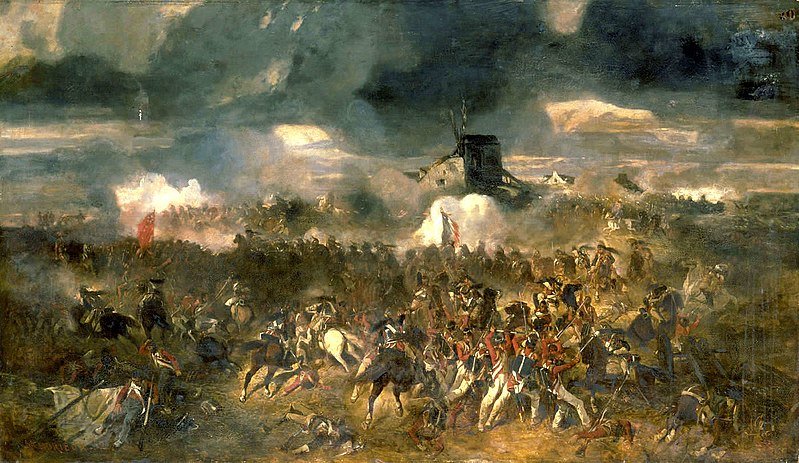
Napoleon raised about 240,000 Frenchmen to face off against about 845,000 allied soldiers on four fronts. The Emperor then kept about 20,000 men in Western France to nip in the bud any royalist insurrection. Image: The Battle of Waterloo by Clément-Auguste Andrieux
The Battle of Waterloo left a lasting impact on the world and, especially, Europe. Here are some of the events that occurred after Napoleon’s bitter loss:
It Marked the End of the Napoleonic Wars
The Napoleonic Wars took place for thirteen years. It’s likely that between 3.5-6 million people died during that period. At that time, it was Europe’s bloodiest and deadliest wars to have ever occurred. It would take several years for a war of that level to be seen again. France was also able to reinstate its monarchy while adopting policies from the French Revolution.
The British Empire Expanded
France’s loss in the Battle of Waterloo meant that it had to pay severe fines to cover the entire cost of the war. It was no longer a threat, particularly to the British, who were now the most powerful kingdom in all of Europe and the world. Britain acquired more territories after the battle, including South Africa, Bermuda, New Zealand, and Sri Lanka. That same century, the British began colonizing many places in Africa and the Indian subcontinent.
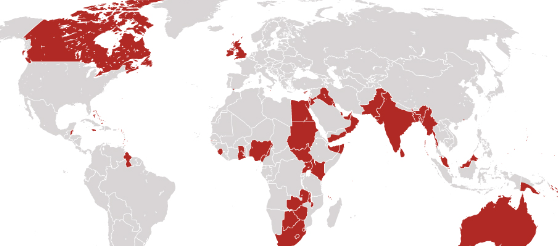
With Napoleon, possibly Britain’s fiercest rival of the century, gone, the British had the clarity of mind to expand its empire, including into places like the Indian subcontinent and Africa.
The United States Took Over World Trade
With Britain and other European powers distracted throughout the Napoleonic Wars, the United States silently took advantage of the situation. The government bought the state of Louisiana (i.e. Louisiana Purchase of 1803) from France, which helped Napoleon build his troops. But the years of conflict also left a gap in international trade and the United States decided to occupy that gap, becoming the main suppliers of grain and cotton to the world. It was a highly lucrative business, especially for southern business tycoons and accounted for the reason why they were against the abolishment of slavery.
The Battle of Waterloo Created Waves of Nationalism Across Europe
Prussia’s participation in the Napoleonic Wars (1803-1815) and the Battle of Waterloo formed a major part of its history. When it transitioned into the German Empire in 1870, Prussia’s proud history also shifted into nationalism. While nationalism and being proud of one’s country were inherently good things, too much of it led to the birth of the Nazi Party, which led to World War II, which remains the deadliest war to date.
There was Peace in Europe
With the Bourbon dynasty back on the French throne after Napoleon’s defeat, the Charter of 1814 was issued. France underwent periods of rather peaceful transitions, swaying between monarchy and republicanism for a while.
As of the 21st century, France remains governed by the Fifth Republic, which was established on 4 October 1958 by Charles de Gaulle under the Constitution of the Fifth Republic.
Waterloo in Popular Culture
Although most of the changes that the events of the Battle of Waterloo brought about were political, it did also affect world culture. Close to 46 towns and cities globally are called Waterloo, with many of them located in the United States. Waterloo is also one of the most popular names for bars, bridges, and even train stations.
It has also served as the setting or backdrop for many fictional and non-fictional novels, as well as poems and historical films.
The Battlefield Serves as a Monument
Several sites that were used in the Battle of Waterloo have turned into historical monuments. In Wallonia, Belgium, the King of Netherlands William I decided to build Lion’s Mound in 1820. The mound is a fake hill that was constructed around the ridge where the Duke of Wellington had stationed his troops. Other sites that are now landmarks include Hougoumont, La Haye Sainte, as well as a burial monument for Prussian troops in Plancenoit.
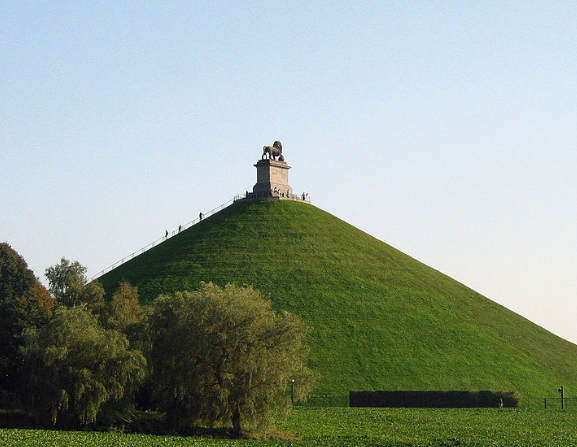
The Battle of Waterloo in 1815 took place on a field near the Belgian town of Waterloo. Image: The Lion’s Mound at Waterloo
Waterloo served as the inspiration for NATO & the UN
Before the rise of Napoleon, most of the European powers had been in conflict with each other. By setting their issues aside and forming coalitions to put an end to France’s growing power, these countries realized the importance of unity. These events partly inspired the creation of the North Atlantic Treaty Organization and the British Prime Minister Winston Churchill first used the term “United Nations” to describe the seventh coalition that fought in the Battle of Waterloo.
Are the French still bitter about their loss at Waterloo?
Many French people either love or hate Napoleon. On one side, he was viewed as a wicked leader who brought back slavery and limited women’s rights. He was also responsible for causing millions of deaths simply because he refused to back down. But he also gave France an identity and relieved them from further oppression from the French royal family.
In 2015, while celebrating 200 years since the battle, Belgium released a minted Euro coin that depicted Waterloo. France tried to block its release and refused to send any member of its royal family to partake in the commemoration. The Belgians decided not to release the coins and instead created identical coins that were only valid in Belgium. These coins featured depictions of the Duke of Wellington, as well as von Blucher, the allied troops, and a figure of Napoleon.
What if Napoleon had won at Waterloo?
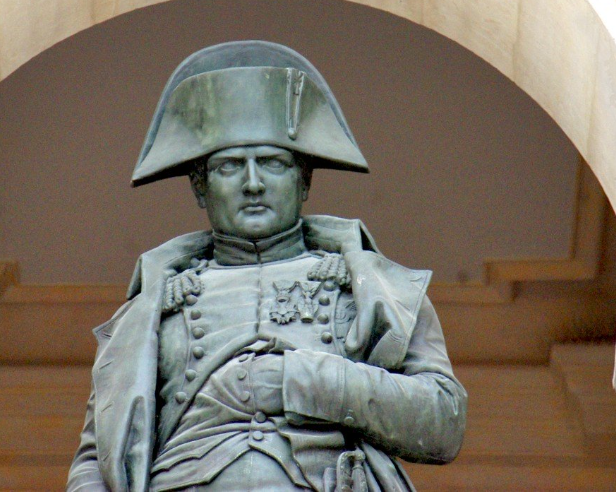
Emperor of the French Napoleon Bonaparte
It’s likely that if Napoleon had won the Battle of Waterloo, France might have been a dictatorship in modern times. Or perhaps, Europe’s history would have also changed drastically.
The map of Europe also changed, as the French territories were restored to their original borders. France’s loss, although devastating, had also inspired French national unity and that helped the yet-again restored monarch to rule effectively.
Frequently asked questions about the Battle of Waterloo
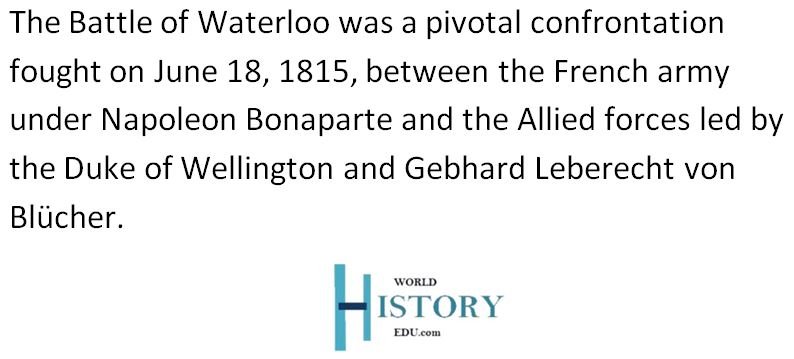
Why is the Battle of Waterloo significant?
The Battle of Waterloo is significant as it marked the final defeat of Napoleon Bonaparte and the end of the Napoleonic Wars. It had a profound impact on European history, leading to Napoleon’s exile and the restoration of the Bourbon monarchy in France.
Where did the Battle of Waterloo take place?
The battle took place near the town of Waterloo in present-day Belgium.
Who were the key commanders in the Battle of Waterloo?
The key commanders were Napoleon Bonaparte leading the French forces, and the Duke of Wellington commanding the Anglo-allied forces, along with Gebhard Leberecht von Blücher leading the Prussian forces.
How did the battle unfold?
The battle unfolded in stages, with initial French attacks, a critical stand by the British infantry, and the arrival of Prussian reinforcements that turned the tide against the French.
What were the outcomes of the Battle of Waterloo?
The Allied forces emerged victorious, leading to Napoleon’s abdication and subsequent exile to the island of Saint Helena. The battle had a lasting impact on European geopolitics.
How did the terrain influence the battle?
The undulating and soggy terrain played a crucial role. The French cavalry charges were hindered by the mud, and the Allied infantry took advantage of the ridge at Mont-Saint-Jean to resist the French assaults.
How many soldiers were involved in the Battle of Waterloo?
Approximately 73,000 French troops faced around 68,000 Allied forces.
Did the weather affect the Battle of Waterloo?
Yes, heavy rain the night before the battle and during the early hours of the day created muddy conditions that impacted the movement of troops, particularly the cavalry.
What is the significance of the phrase “meeting your Waterloo”?
The phrase “meeting your Waterloo” has become a metaphor for suffering a decisive defeat or failure, drawing on the historical importance of the Battle of Waterloo as the moment of Napoleon’s downfall.





